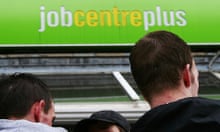Employment up by more than 250,000 on the quarter. The unemployment rate below 7% and at its lowest rate in five years. Average earnings are picking up and finally outpacing prices. With the labour market as strong as that, surely an increase in interest rates must be coming?
That's certainly what the City thinks. Sterling rose after the unemployment figures were released and dealers have advanced the date at which they expect the Bank of England to push up the cost of borrowing.
And there is a case for the Bank of England rethinking its strategy. At 6.9%, the jobless rate is below the 7% threshold announced by Mark Carney last summer: the point at which the Bank's nine-strong monetary policy committee would assess whether a rate increase was needed.
The Bank modified its forward guidance after unemployment fell more rapidly than expected last autumn and says it will look at a range of indicators to assess the health of the labour market.
The latest figures from the Office for National Statistics show that some of these indicators point to a tighter labour market. Vacancies are rising and the number of people working part-time because they can't find a full-time job is falling. The labour market expert John Philpott notes that the increase in net new jobs in 2013 – 993,000 – was one of the best performances in decades and more typical of the late stages of a boom, rather than the early stages of a recovery.
Even so, the Bank is unlikely to rush into an early rate rise. Why? Because the unemployment data is still patchy and not quite as strong as it looks at first glance. Employment was up by 239,000 in the three months to February but self-employment accounted for 146,000 of the increase. Part-time work rose by 74,000.
Employment is on the increase in all sectors of the economy barring the public sector, but the role played by the housing market in the recovery is illustrated by the 175,000 increase in jobs from construction and real estate.
What's more, earnings are only outstripping inflation once bonuses are taken into account. Basic pay, due to the public sector squeeze, is still running below the annual increase in the cost of living. Pay growth remains weak and the headline rate of inflation is just 1.6%.
For the past couple of months, Carney and his MPC colleagues have pointed out that they are in no hurry to raise rates. They are likely to take more notice of the details of the labour market statistics rather than the headline numbers.







